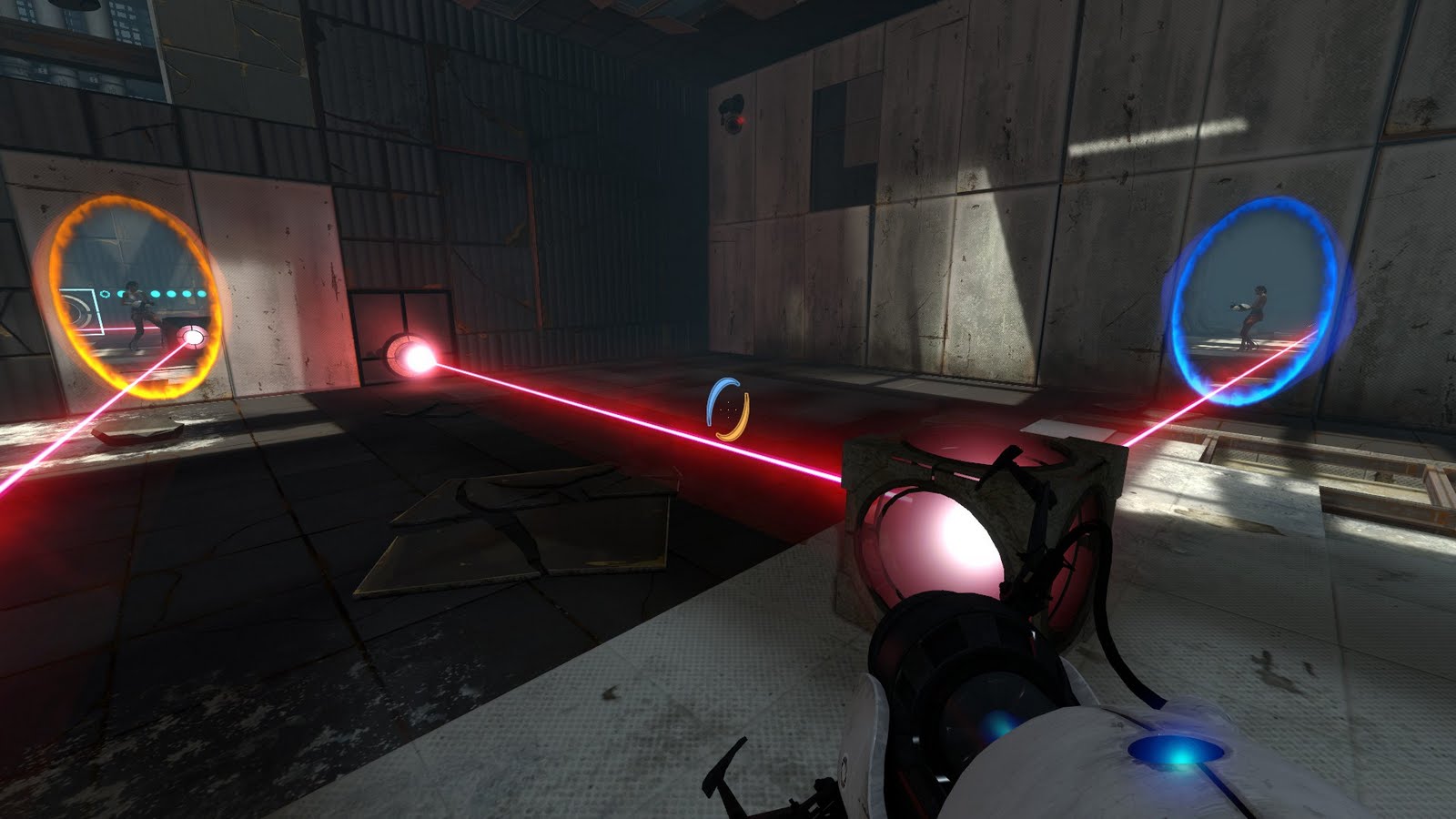The basic mechanic from Portal is unchanged: the player acquires a portal gun which can shoot blue portals and orange portals. The blue and orange portals are linked and anything passing through one portal will emerge from the other. There are a few conditions though: you can only have one blue and one orange portal up at a time, and they can only be fired onto certain surfaces, common in the game's test chambers but relatively rare in the many sections between the chambers.
The original Portal proved that portals plus a few boxes and buttons can provide a suitably varied and challenging experience; so what could Portal 2 add to keep the sequel interesting?
Well, firstly they added a more compelling narrative. There are a few more twists and turns in the sequel's story which is told by way of some very humorous characters with the testing overlord AI GLaDOS returning from the first game, and a bumbling personality core, Wheately, accompanying you as you begin your adventure through Aperture Labs.
But the story is still just a background element to the puzzles, and here Portal 2 keeps it fresh with new environmental components introduced almost every chapter. The new components are:
- Laser deflecting boxes
- Light bridges - so many uses beyond just walking on them, especially since you can use portals to make the bridges vertical
- Light funnels - act kind of like light bridges except they force anything caught in them to go along them in their direction, horizontally or vertically
- Aerial faith plates - spring-loaded catapults to generate a great deal of momentum
- Blue gel - you (or any object) will bounce off it and objects can be covered in it making them very bouncy
- Orange gel - you can run really fast on it and so is another way of getting a lot of momentum
- White gel - flat areas coated in this goo can have portals on them
If you're interested in seeing some of these components and how they're used in the context of a puzzle, you can have a look at my (spoiler-heavy) "Let's Play a Portal 2 Test Chamber" from later on in the Portal 2 single player campaign.
For newcomers to the Portal series, Portal 2 starts off really easy but quickly ramps up as the new components are introduced. This difficulty comes from having to use the new components in clever ways rather than tricky portal shots like in the original.
Now Portal veterans (like myself) were hoping that later in the game, with all these new components, we'd get some really difficult puzzles to really challenge our puzzle-solving skills. Unfortunately that isn't the case: just when things are getting interesting with one of the new environmental components, the next test chamber will feature a different component and we'll be back to easy levels again. There are unfortunately no really difficult levels; even the final "boss level" uses just a couple of the new components and is only made somewhat challenging by a timer.
To be fair, the original Portal was just as easy and quite a bit shorter. But what really helped there were the advanced chambers (one of which kept me stumped for hours) and challenges (fewest portals or quickest time to solve a test chamber). However there's none of those options in Portal 2. According to news sources, free DLC will arrive eventually to fill in this gaping hole. Until then we have just about 12 hours of gaming: an 8 hour single player campaign and a 4 hour multiplayer campaign.
And talking of multiplayer ... the biggest innovation in Portal 2 is the co-op mode. If you can grab a like-minded friend to join you in this, it will be the most fun you've had since you discovered the joy of portal making in 2007. Since two heads are better than one, it's quite easy to blitz your way through the levels as one player figures out the solution if the other gets stuck. But with 4 portals at your team's command, the sheer creative joy of figuring out some of the solutions is great.
I loved Portal, and I love Portal 2 so much that I want more. As mentioned above, Valve has promised us more and I can't wait until then.
Final Score: 9 / 10 - Superbly polished puzzle game with an excellent single player story and a fun co-op campaign. It's only let down by a lack of really challenging puzzles and replayability options.
Notes on my personal rating scale: They are entirely based on my personal feelings about the game - I don't rate a game on its own merits but rather how much I've enjoyed and how much time it's sucking out of my life. Strategy games will do well and shooters poorly because those are my gaming preferences.
0-4 = Poor game that I won't be bothering to play any more
5-7 = Decent game - fun enough that I'll try play it some more if I have the time
8-10 = Good game that I'll be playing a lot more or have already finished and greatly enjoyed




No comments:
Post a Comment